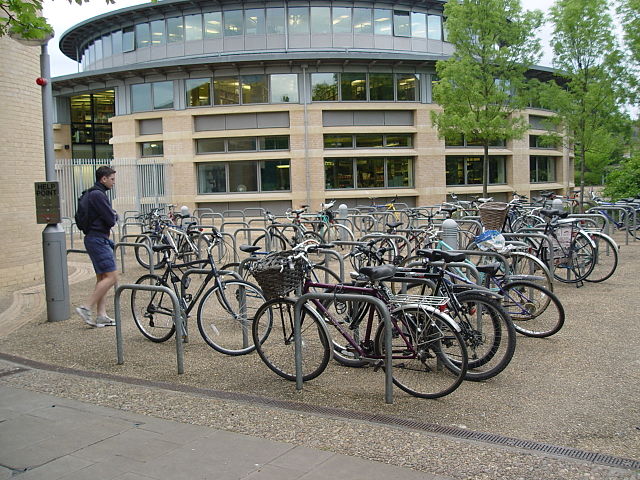In 1977 the U.S. Food and Drug Administration banned women “of child-bearing potential” from participating in clinical trials. This was in part due to thousands of children worldwide being born with missing and malformed limbs after their mothers had taken thalidomide — often prescribed in the 1950s for nausea and as a sleep aid. Continue reading Advancing women’s health research
All posts by Tori Indivero
Horizons and opportunities for nursing research
Sitting in a room full of nurses last week, I found myself listening to a group of people who spoke passionately about making a difference in people’s lives. These nurses, along with other health researchers, were trying to figure out how they could better collaborate across the commonwealth and how their research results could be applied in the real world — in places like clinics, hospitals, and nursing homes.
I was attending the Horizons and Opportunities Conference that the Center for Nursing Research and the Social Science Research Institute organized for Penn State health researchers. It was fascinating to learn about some of the health research currently being conducted on Penn State campuses, as well as the research that Penn Staters are eager to pursue. Continue reading Horizons and opportunities for nursing research
Raptor in residence
I don’t like birds. They creep me out. Sparrows and chickadees and all those tiny birds that peck around when you’re eating your lunch outside. From a distance I don’t mind them — in fact, I think birds can be quite majestic creatures.
However, raptors are a completely different story. I love them. They totally fascinate me; I could watch them for hours. I know that raptors are birds (“birds of prey,” in fact), but somehow they seem like a different species* to me.

So you can imagine my delight when a red-tailed hawk visited our office building the other day. The juvenile hawk perched in a tree just outside of our second-floor office windows. She was beautiful! And hunting. (Sidenote: It was unclear whether our feathered friend was male or female, and so for ease of reading our hawk will be a lady.) She hung out in the tree for a long while, surveying the parking lot full of construction workers’ trailers, the sidewalk, and the ivy. And maybe us.
Anxiety on the brain

I am an anxious person by nature. Crowds make me anxious. Driving at night makes me anxious. Loud noises in general, but shouting in particular, make me anxious — even if the shouting is not directed at me. But why? What makes me react to crowds this way, while others are not bothered in the least by crowds or loud noises?
There are probably lots of reasons. And, as with anything as complicated as the human brain, most of the reasons are probably intertwined with each other.
My therapist tells me anxiety is seeded in fear. I was recently talking with Koraly Pérez-Edgar, an associate professor of psychology here at Penn State, for last week’s episode of the Chemical Heritage Foundation’s Distillations podcast. She told me that shy people often have an overactive amygdala, but you can listen to our conversation here as part of a segment titled “Inside the brain.”
Fear, shyness, overactive amygdala. Hmm.
Pérez-Edgar explained that the limbic system is what shapes your response to threat and novelty in the environment. And at the center of the limbic system is the amygdala. The amygdala is known to be the seat of emotion and your fight-or-flight reaction. When stimulated, it triggers your nervous system to momentarily freeze, assess the situation (likely quicker than you have time to process it), and then either stay put and defend or run away — the basic survival instinct.
So somehow, my amygdala has decided that nighttime driving and shouting are reasons for me to run away. While I am not a shy person, as the people Pérez-Edgar studies are, many of the things she described match my gut reactions. Perhaps I have an overactive amygdala after all.
I also discovered during our conversation that the children’s toy the jack-in-the-box can be a terrifying experience for many babies who turn out to be shy and have an overly sensitive amygdala.
“A lot of babies, they giggle, they laugh, they think it’s funny,” Pérez-Edgar said of the jack-in-the-box. “But these [shy] babies are terrified. They’re crying, they arch their back, they move their arms back around, their system has just said DANGER.”
As she described these reactions to me, I thought about a jack-in-the-box and how unappealing that experience seems to me, as an adult.
Immediately after we were done talking, I texted my mom, wanting to know if I hated jack-in-the-boxes when I was a baby. She didn’t remember. How can you not remember your first-born’s every experience?? My boyfriend pointed out that the jack-in-the-box was not really a popular toy when we were growing up. He insists on being the reality check in my life.
In any case, a baby’s overactive amygdala is likely linked to either his genes or his environment — in utero, during early development, or both. Or both his genes and environment influenced the amygdala.
Do I have an overactive amygdala? And if I do, why? It’s probably not worth my time to figure out right now. Meanwhile, I’ll keep practicing yoga to help keep my anxiety in check.
‘Like riding a bicycle’? I beg to differ
National Bike to Work Month is coming to an end today. I’d like to take a moment — and this blog post — to reflect on bicycling to work.

I know many people who bike to work, and use biking as their main mode of transportation in general. I have friends who biked to work when I lived in Center City Philadelphia. I imagine they still do. My man bikes to work, about three miles each way. To me, this seems awesome yet terrifying at the same time.
I love the idea of the bicycle. It kills three birds with one stone — you’re exercising, you’re getting places faster than if you had walked, and you’re helping the environment! Finding parking for your bike is probably not as annoying as parking a car, you don’t have to pay for it, and you can often get closer to your destination before needing to park.
Yet…the bicycle and I are not friends.
This fact seemed to be glaring at me over the past few weeks. As mentioned, the entire month of May is dedicated to bicycling to work. Also, my department was reminded that our offices will be moved to a location that is not easy to get to by bus (my current mode of transportation to work). And I was writing an article with Penn State kinesiology researcher Melissa Bopp about active commuting.
Bopp’s study found that those who actively commute — read: walk or bike to work — can have a significant influence on their partners and co-workers to do the same. Whether or not an employer supports active commuting and availability of sidewalks and bike paths are also important factors.
And it turns out that men are more likely to actively commute than women. Why is this? Bopp’s current research doesn’t address the why, but I could guess. The appeal of arriving to work sweaty and with helmet hair is indeed overwhelming. And how does one bike to work in professional clothes and successfully still look professional when arriving to work? I know some people can do it, but this is yet another deterrent for me. But mostly, it’s that I haven’t been able to get over my bike-riding phobia.
My boyfriend has been trying to get me on a bike for a solid two years. I haven’t been on a bike for nearly 20. But one day a couple weeks ago, I told my boyfriend I was ready to attempt biking. He immediately got on Craigslist and found a bike. “It’s a pretty green color,” I replied…
We went to look at it, where boyfriend told me I had to ride it before we bought it. I’m pretty sure my apprehension was tangible. I’ll spare you the details, but just know there were tears of frustration, eventual pedaling by me while boyfriend held onto the bike and jogged along next to me, and a purchase, mostly because we were embarrassed by the whole fiasco and the amount of time this nice man let us take up on a Sunday.
I have gotten on a bike twice since then. However, I would not say I’ve achieved success quite yet. Or even close. But I’m not ready to give up. I am jealous of everyone I see riding a bike with ease these days. Maybe that will boost my determination, and I can join the ranks of people who encourage their coworkers to bike to work, too! Maybe. Keep your fingers crossed for me.

